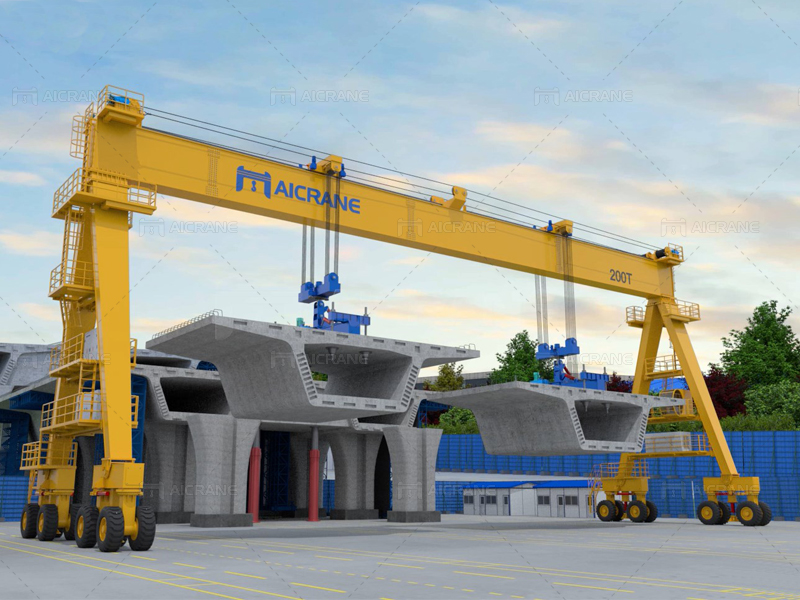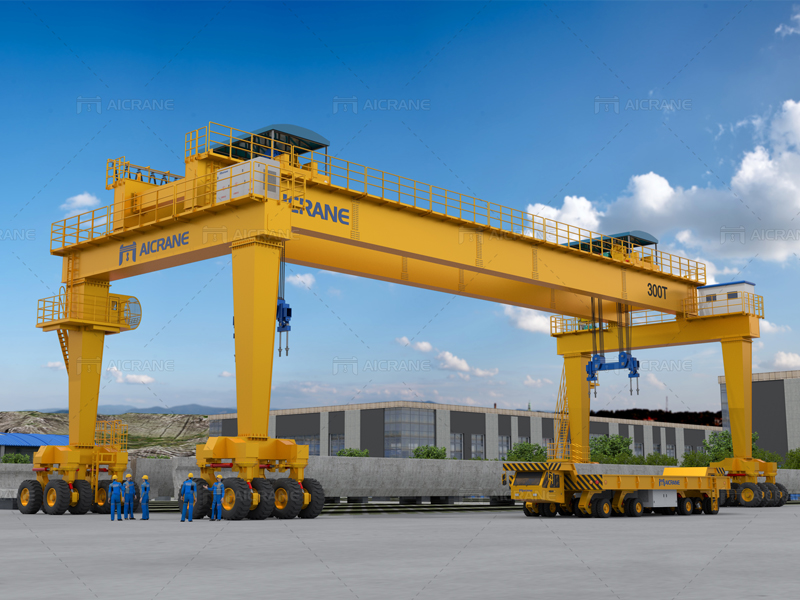Bridge construction is a complex and demanding undertaking that requires specialized equipment to handle heavy materials and ensure efficient assembly processes. Among these crucial tools is the bridge construction gantry crane. This article aims to delve into the inner workings of these powerful machines, exploring their mechanics, functionality, and key components. By understanding how bridge construction gantry cranes work, we can appreciate their vital role in building sturdy and reliable bridges.

The Anatomy of a Bridge Construction Gantry Crane
A bridge construction gantry crane consists of several main components working together to perform lifting and positioning tasks. These include:
Gantry Structure: The framework or gantry structure forms the backbone of the straddle lift crane. It spans the width of the bridge and provides support for the various moving parts.
Trolley System: The trolley system is mounted on rails along the gantry, allowing horizontal movement. It carries the lifting mechanism and enables precise positioning of loads.
Lifting Mechanism: Multiple hoists or lifting mechanisms are attached to the trolley system and have lifting capacities tailored to the project’s requirements. These hoists lift and lower heavy materials such as precast concrete segments or steel girders.
Control System: A control cabin or panel houses the controls needed to operate the crane. Skilled operators use these controls to maneuver the crane and execute lifting operations safely and accurately.

Operation and Functionality
To understand how a bridge construction gantry crane works, let’s explore its operation and functionality step by step:
Assembly and Positioning: The gantry crane is first assembled near the bridge construction site. Once erected, it is positioned on tracks mounted on the bridge piers or abutments. This allows the crane to move longitudinally along the bridge.
Load Preparation: Before lifting, the materials to be placed on the bridge are prepared for transport. This may involve attaching lifting gear such as slings or rigging equipment to ensure secure and balanced load distribution.
Lifting Process: The crane operator controls the lifting mechanism to engage the appropriate hoist or hoists. The hoists then raise the load from its initial position while maintaining stability and balance during the lift.
Travel and Placement: Once the load is lifted to the desired height, the bridge construction crane can move horizontally along the gantry structure using the trolley system. This allows precise positioning of the load at the designated location on the bridge.
Lowering and Release: When the load reaches its intended placement spot, the hoists gradually lower it into position. The operators carefully release the load by detaching the lifting gear, ensuring a safe and controlled descent.
Safety Considerations
Safety is paramount when operating bridge construction gantry cranes. Here are some crucial safety considerations:
Regular Inspection and Maintenance: Prior to each operation, the crane should undergo thorough inspection and maintenance to identify and address any potential issues promptly.
Operator Training: Skilled operators who have undergone proper training are essential to ensure the safe and efficient operation of the crane. They must have a solid understanding of the crane’s controls, load capacities, and safety protocols.
Load Capacity Limits: Exceeding the crane’s load capacity poses a significant risk. Operators must be well-versed in load calculations and adhere strictly to the recommended limits.
Load Securement: Proper securing of loads is vital to prevent accidents or material damage during transportation. Adequate lifting gear should be used, and operators should verify load stability before proceeding with any movements.
Safety Procedures: Strict adherence to established safety procedures, such as signaling protocols and communication systems, helps maintain a safe work environment. Clear communication between the straddle carrier crane operator and ground personnel is crucial during lifting operations.
Conclusion
Bridge construction gantry cranes play a pivotal role in the successful completion of bridge projects by enabling efficient material handling and precise positioning. Understanding their mechanics and functionality provides insight into their importance and the safety considerations involved. By following strict safety protocols and ensuring well-trained operators, these powerful machines can contribute to the creation of strong and reliable bridges that serve communities for years to come.